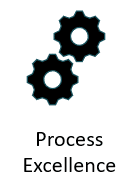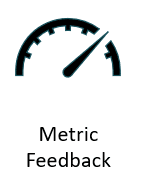
The Fundraising Performance Imperatives offer a systemic approach to developing highly productive, mutually beneficial donor relationships based on the Four C’s of fundraising—Culture, Case, Constituency and Capacity—as well as Lean Six Sigma thinking, advanced management theory, performance improvement, the quality movement and social psychology.
The six overarching Imperatives provide the framework for an advanced system continuously improved since 2003 to dramatically increase fundraising production.
By adopting the Fundraising Performance Imperatives as an execution framework, fundraising organizations are able to achieve the internal transformation necessary to succeed in an external environment of continuous disruptive change.

#1 Business Case ROI
The first Imperative requires changing the way senior management (and often the rest of the organization) thinks about fundraising.

#2 Donor Motivations
The donor is the customer. Not the organization. Understanding donors’ motivations is essential, not only within the fundraising staff but throughout your organization.

Incremental change produces, at best, incremental improvement—often short lived. The imperatives in this category require radical redesign to support well-structured, technology-supported, stage-gated processes.

#4 Highest & Best Use
Resources—including time—are always scarce relative to need. That’s why Michael Porter, the currently reigning Harvard Business School strategy guru, famously said that the most important strategic decisions are what you choose not to do.

#5 Process Excellence
The FPI Core Process™ is the beating heart of high-performance fundraising. It is the core of an end-to-end process-based structure with 100% process documentation and crystal-clear primary accountabilities.

#6 Metric Feedback
Metric-based management creates organizational alignment while dramatically reducing the overhead burden, allowing more time to be redeployed to actual fundraising.